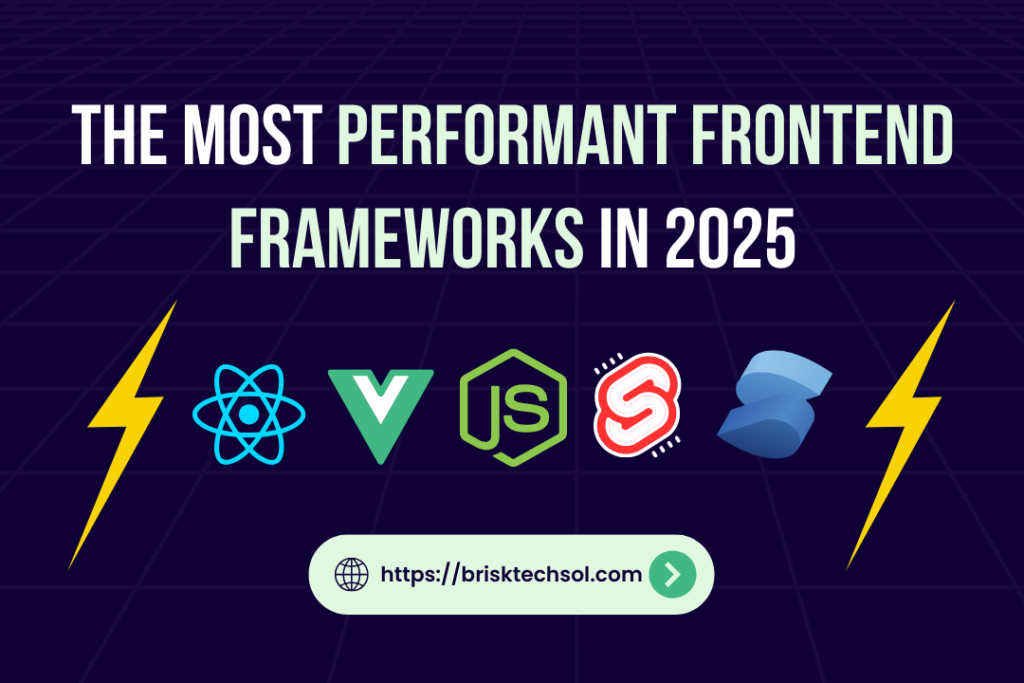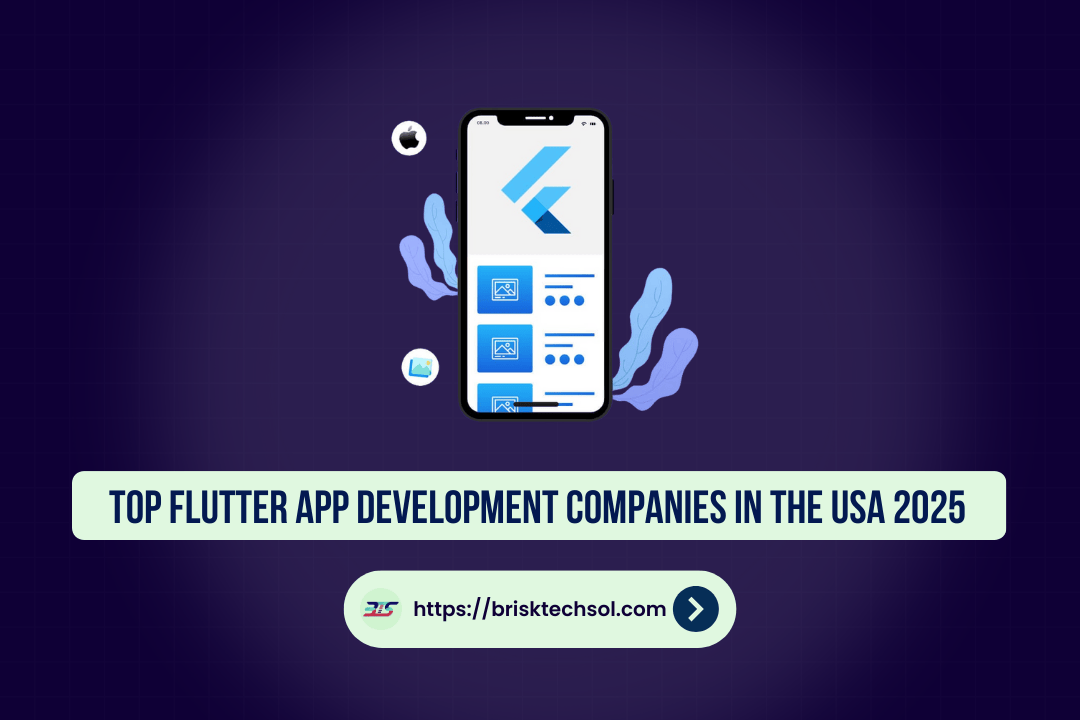The web development world is constantly changing, and choosing the right frontend framework is crucial for the performance and scalability of applications. This article explores the top five performant frontend frameworks of 2025. React, Vue, Svelte, Next.js, and Solid.js by analyzing their pros and cons, use cases, and benchmarks. Understanding their strengths and limitations will help developers make informed decisions specific to project needs.
Understanding Performance Metrics in Frontend Frameworks
When comparing frontend frameworks, it’s essential to understand what “performance” really means in a web development context. Performance can be broken down into several critical metrics that impact the user experience and overall efficiency of an application:
1. Initial Load Time: This measures how quickly the content of a page loads for the first time. Frameworks like Svelte and Solid.js excel in this area due to their lean compiled code and minimal dependencies. A faster initial load time ensures users can access content without delays, which is particularly important for sites with high traffic or those focusing on user retention.
2. Time to Interactive (TTI): This metric indicates how quickly a page becomes fully interactive after loading. Frameworks that minimize JavaScript execution and optimize DOM rendering generally have better TTI scores. For example, Solid.js and Next.js are engineered to offer faster TTI through efficient DOM management and pre-rendering capabilities. A good TTI score means that users can engage with a page’s interactive elements, like forms and buttons, almost immediately after the content loads.
3. Bundle Size: Smaller bundle sizes result in quicker load times and reduced bandwidth consumption. Frameworks like Svelte, with its ~10 KB minified bundle, and Solid.js at around ~7 KB, are clear leaders in this aspect. Smaller bundle sizes also translate to better performance on devices with lower processing power, improving accessibility across a broader range of users.
Top Performant Frontend Frameworks
1. React
Overview: React is a JavaScript library developed by Facebook for building user interfaces, particularly for single-page applications. It is widely adopted due to its component-based architecture and virtual DOM.
Real World Example
Performance Table
| Metric | Score (Lower is better) |
|---|---|
| Initial Load Time | 1.2s |
| Time to Interactive | 2.5s |
| Bundle Size (minified) | ~42 KB |
2. Vue.js
Overview: Vue.js is known for being lightweight and highly flexible, appealing to both beginners and experienced developers due to its straightforward syntax and powerful features.
Real World Example
Performance Table:
| Metric | Score (Lower is better) |
|---|---|
| Initial Load Time | 1.0s |
| Time to Interactive | 2.2s |
| Bundle Size (minified) | ~33 KB |
3. Svelte
Overview: Svelte is a compiler-first framework, meaning that your code is compiled into highly optimized JavaScript during the build process, eliminating the need for a virtual DOM.
Real World Example
Performance Table:
| Metric | Score (Lower is better) |
|---|---|
| Initial Load Time | 0.9s |
| Time to Interactive | 1.8s |
| Bundle Size (minified) | ~10 KB |
4. Next.js
Overview: Next.js is a React based framework that emphasizes server-side rendering (SSR) and static site generation (SSG), providing built-in tools for creating highly performant and SEO-friendly applications.
Real World Example
Performance Table:
| Metric | Score (Lower is better) |
|---|---|
| Initial Load Time | 1.1s |
| Time to Interactive | 2.3s |
| Bundle Size (minified) | Varies by configuration |
5. Solid.js
Overview: Solid.js is an emerging framework that uses fine-grained reactivity, similar to Svelte, but also incorporates JSX. It aims to combine the best of React and Svelte for high performance.
Real World Example
Performance Table:
| Metric | Score (Lower is better) |
|---|---|
| Initial Load Time | 0.8s |
| Time to Interactive | 1.5s |
| Bundle Size (minified) | ~7 KB |
6. Comparative Analysis
| Framework | Initial Load Time | Time to Interactive | Bundle Size (minified) | Best For |
|---|---|---|---|---|
| React | 1.2s | 2.5s | ~42 KB | Large scale applications |
| Vue.js | 1.0s | 2.2s | ~33 KB | Small to medium sized apps |
| Svelte | 0.9s | 1.8s | ~10 KB | High performance SPAs |
| Next.js | 1.1s | 2.3s | Varies | SEO focused projects |
| Solid.js | 0.8s | 1.5s | ~7 KB | Latest small apps |
Choosing the Right Framework for Your Project Needs
The decision to choose a frontend framework extends beyond just raw performance; it should align with your project’s goals, team expertise, and future scalability needs:
1. Project Type and Scale
If you’re building a large, complex web application with dynamic content and extensive user interactions, React or Next.js may be more appropriate. These frameworks offer robust ecosystems, third-party library support, and scalability features essential for large projects. The component-based architecture in React allows for reusable components, which can be highly advantageous for managing complex state and UI components efficiently.
On the other hand, for small to medium-sized applications or projects with specific performance goals, Svelte or Solid.js may be a better fit. Svelte, for instance, compiles during the build process to generate highly optimized JavaScript, directly manipulating the DOM without a virtual representation. This reduces the execution overhead and results in faster interactions and load times, ideal for projects with minimal backend interaction or standalone user interfaces.
2. SEO and Server-Side Rendering
For projects that rely heavily on SEO, such as e-commerce platforms or blogs, Next.js stands out. With built-in server-side rendering (SSR) and static site generation (SSG) features, Next.js ensures that pages load quickly for both users and search engine crawlers. This setup boosts search engine rankings and improves the overall user experience by reducing time-to-first-byte (TTFB) and enhancing page load speeds.
3. Developer Experience and Ecosystem
Vue.js offers an approachable learning curve and clear documentation, making it an excellent choice for teams looking to transition from smaller projects to more complex applications without a steep learning curve. While its ecosystem may not be as extensive as React’s, Vue has steadily grown with a strong community that continues to contribute plugins and libraries.
Conclusion
Choosing the most performant frontend framework requires balancing performance metrics with project-specific needs, team skill levels, and long-term scalability. Whether prioritizing fast load times, an extensive ecosystem, or optimal developer experience, frameworks like React, Vue, Svelte, Next.js, and Solid.js offer distinct advantages and trade offs.
FAQ
What is the fastest frontend framework in 2025?
Frameworks like SvelteKit and Solid.js are recognized for their superior runtime performance.
How does server-side rendering improve performance?
SSR pre-renders content on the server, making initial loads faster and improving SEO.
Which frontend framework is best for SEO?
Next.js is a strong contender due to its built-in support for SSR and static site generation.
Why is bundle size important in web development?
Smaller bundles lead to faster load times, reducing bounce rates and improving user experience.
What are some real-world applications of SvelteKit?
Dynamic, high-interactivity sites and applications with a need for quick load times benefit from SvelteKit.
What tools help measure frontend framework performance?
Tools like Lighthouse, WebPageTest, and GTmetrix are popular for measuring performance metrics.
How does React compare to newer frameworks?
While React is versatile and well-supported, frameworks like Solid.js can offer better performance out-of-the-box.









